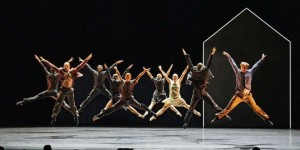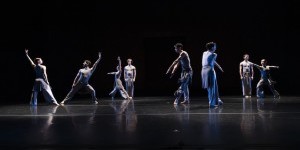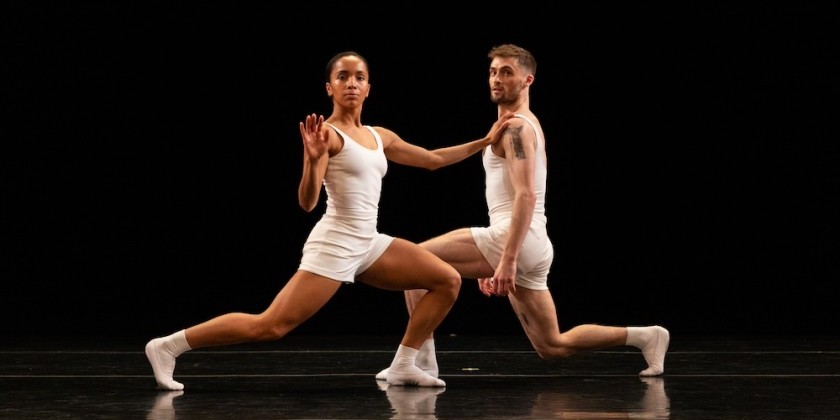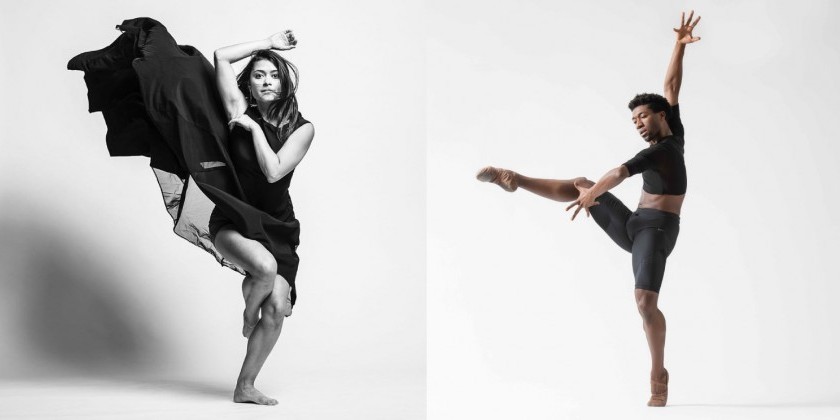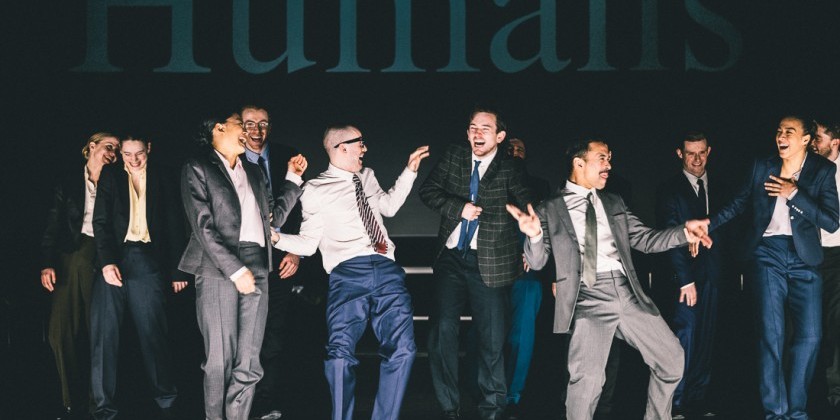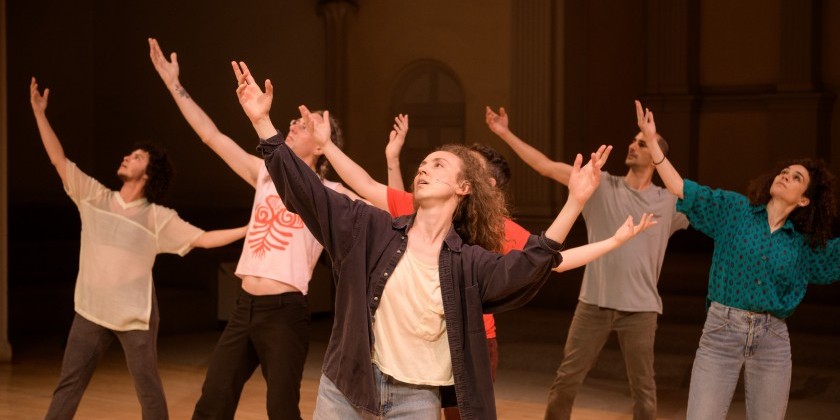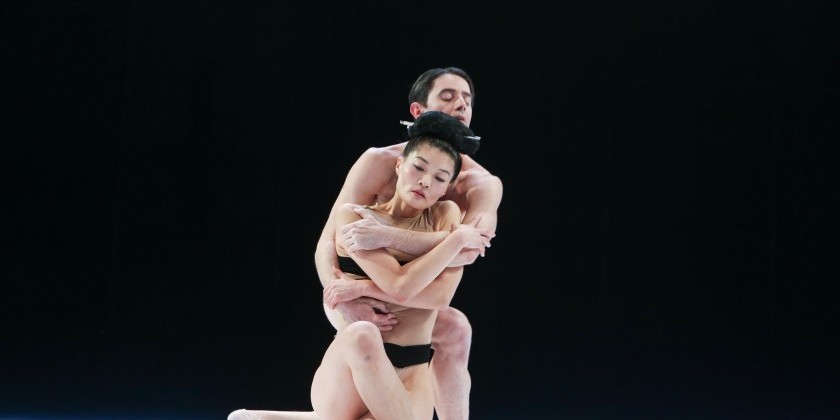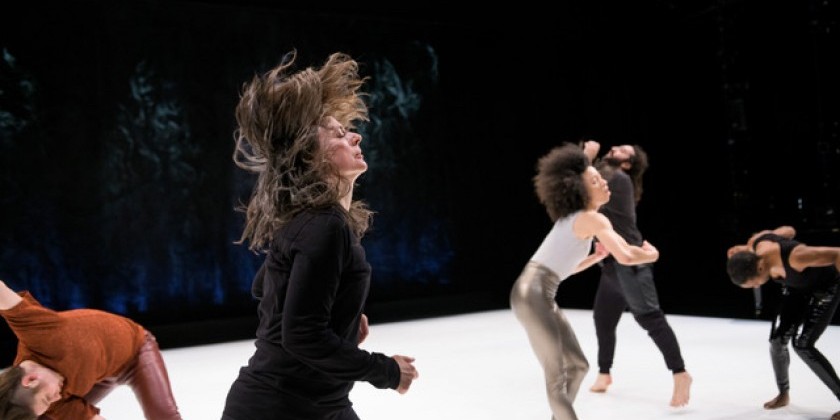IMPRESSIONS: Gathering Place: Black Queer Land(ing)! Curated by Marýa Wethers at Gibney
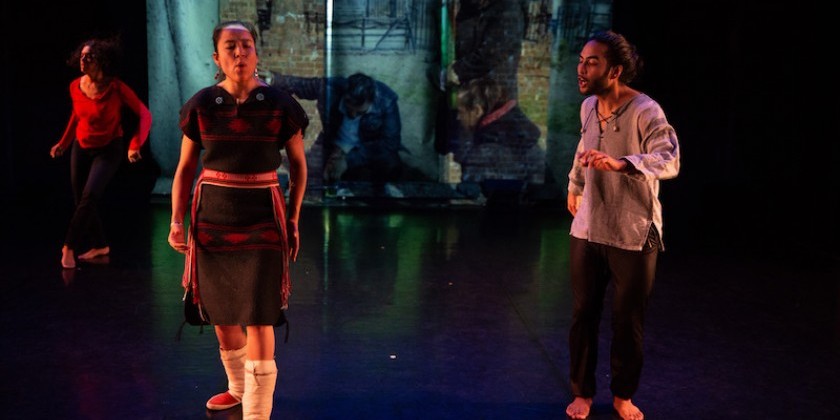
mayfield brooks: IWB: Dancing in the Hold
Part I: P(a)rLAY / April 10, 6–9 p.m.
Part II: Dancing in the Hold / April 12 & 13 at 8 p.m.
Part III: Process(ion) / April 14, 2–8 p.m.
jumatatu m. poe: terrestrial
April 19–21, 6–9 p.m.
I Moving Lab: I LAND 2018
April 26–28 at 8 p.m.
Pictured above: Lyla June Johnston, Dåkot-ta Alcantara-Camacho, and Marýa Wethers in I Moving Lab | I Land 2018
Gathering Place: Black Queer Land(ing)!, curated by Marýa Wethers, activates conversations about land, space, and belonging. It considers ways to transform and ritualize colonized spaces. Here, ‘colonized spaces’ refers to any land taken from indigenous people for the profit and ownership of white settlers.
I sat down with Wethers post-curation to chat about the shows and the curation overall. Here is what unfolded . . .
Melanie Greene for The Dance Enthusiast: What is the inspiration behind your curation?
Marýa Wethers: Curatorial practices have become more visual points of discussion. My curatorial practice is committed to amplifying voices and creating opportunities for artists of color, and queer artists of color.
How are you using the word ‘queerness’ curatorially?
Marýa Wethers: The origin of queerness comes from sexuality, gender and gender expression but it feels like it’s more than that. It is a process of forming an identity on our own terms that is inclusive of a spectrum of ways of being and inhabiting our bodies. It’s about how we represent our identity, and subvert identity or perceived markers of identity. My interest is through an embodied practice as movement makers, movement practitioners and the positioning of these different propositions — blackness, queerness, and indigeneity.
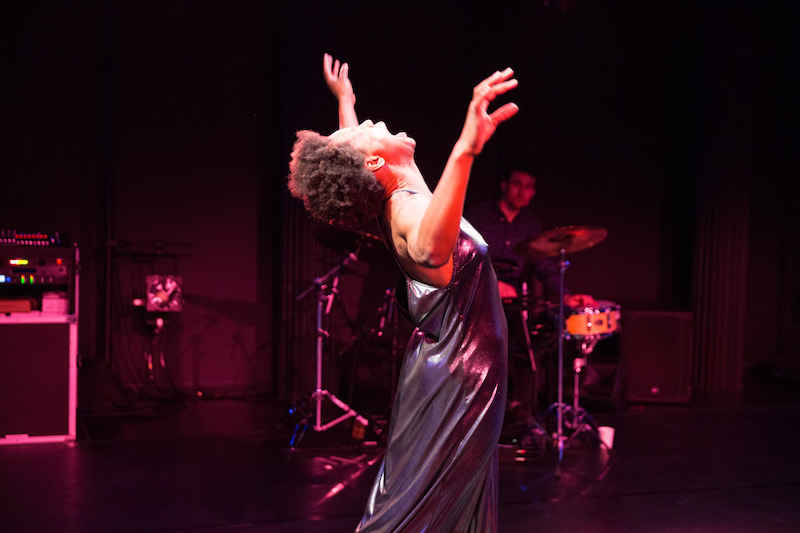
Week One: mayfield brooks | IWB: Dancing in the Hold
Marýa Wethers: Through Movement Research, mayfield brooks hosted a workshop in the fall that was a dance response to Charlottesville. I was really struck by them and how they conducted the workshop. It was hyper-political to have an immediate response. The 3-hour workshop was generous and inclusive. I wondered how they might expand it into a longer thing.
I am interested in procession that is part of mayfield’s performance practice in urban and rural context. They view these processions as interventions. I was interested in that and the way there is a sense of ritual that comes out of black spiritual traditions.
They started and ended the week with a procession to the African Burial Ground Monument. It was so moving (way more than I expected). It’s a very strange place wedged between the federal building which is the one that unearthed the remains during its construction. What mayfield was able to activate with their collaborator, Mlondi Zondi, an African artist, felt really poignant with this African American and African meeting in ‘the hold’, in this lost lineage, forging these ancestral connections. mayfield has practices to connect to the ancestors in that lost space of ‘the hold’, the place between the places.
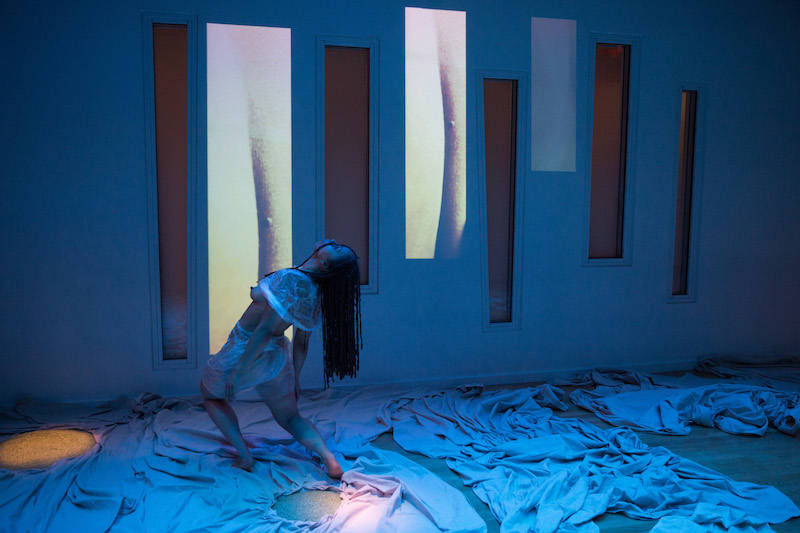
Week Two: jumatatu m. poe | terrestrial
Marýa Wethers: This was the seed of a new thing. It feels very imagistic. I saw in the language, sound and projected images black bodies as extensions of earth. It felt like a reclaiming of our right to exist.
MG impressions
A small group of witnesses are guided downstairs
Only during 15 minute intervals are you allowed to enter or exit
Take care of self and those around you
Tan cloth on the floor
Mounds of green salt draw pools of light above
Three nude bodies, wrapped in clear plastic around their shoulders and waist
They negotiate tiny steps, back and forth, undulating, feet gently peeling off the floor along horizontal corridors
Their irises are deep scarlet
Grunting and moaning, the rustling plastic on top of sweaty flesh completes the chorus
Blue light, progression, closer together, stomping, cloth twists, fabric wraps around ankles
Ritual
Episodic
Suspend disbelief, activate agency
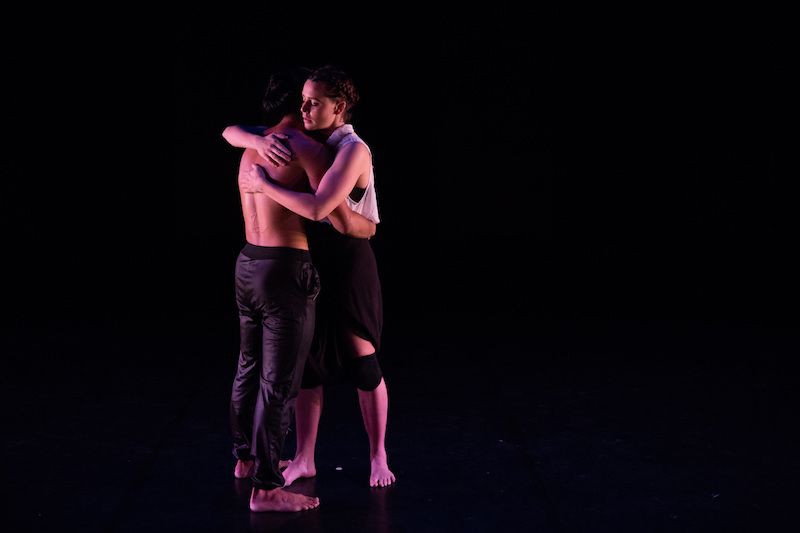
Week Three: I Moving Lab | I Land 2018
Marýa Wethers: The question of indigeneity is very interesting to me. I danced with I Moving Lab and was able to be in creative community with indigenous folks. They are really ambassadors of their culture, land, place, lineages, and protocols of social interaction in a way that hasn’t been present in my life. Even this concept of how you introduce yourself (modeled during the pre-show gathering) was huge. For them it was saying who your people are and where your land is. You put yourself forward by who you come from. What it brought up for me is a very painful realization of all that is lost in ‘the hold’ of the slave ship and middle passage. The intentional and systematic destruction of culture. So in terms of indigeneity, how can black folks relate to that when we can never come from a place of origin as African-Americans. What does indigeneity mean to me as an African-American woman? What can I claim?
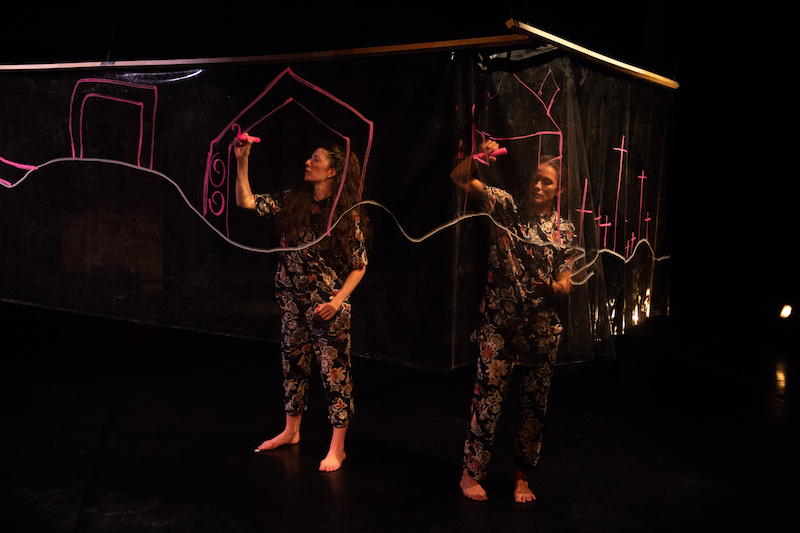
MG impressions
This showcase highlights eight performance works that intertwine indigenous practices with contemporary dance forms. Rich, multi-layered textures appear throughout the evening. During Dance Installation: Pōhutu, by Bianca Hyslop, two women move around a wide plastic sheet that they later adorn with slathers of pink and white paints. In Haki/Earth, by Jack Gray, male dancers wear straw loin costumings. These textures amplify a tactile reminder that drives I Moving Lab to stay connected to their land, place, and lineage. Lyla June serenades with a live song, Nanwkad. The melodic and truthful lyrics honor both her European and Native American ancestors. A hip hop number by Infinite Dakota rapping in an indigenous language with Lyla June rounds out the evening. He alternates bars with June who simultaneously keeps rhythm beat boxing with a handheld drum.
Wethers’ curation centers artists, ideas, and conversations at the nexus of commonality and difference. It successfully creates a meeting space to move, share, and fellowship. It is a gathering out of necessity that activates feelings of healing and homespace.
NOTE: Throughout the curation, signs were posted stating that ‘Gibney pays respect to Lenape Peoples. We acknowledge that this work is situated on the Lenape Island of Manhahtaan in Lenapehoking, the Lenape homeland.’ This curation was along a platform to amplify Blackness, queerness, and indigeneity.




